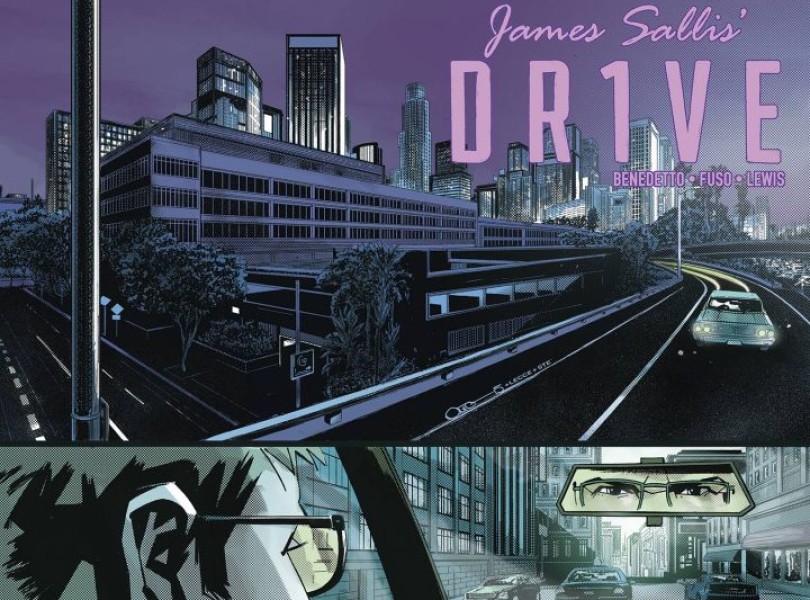The 2009 film Drive was an unexpected hit, building on the foundation of James Sallis’ neo-noir novella and weaving a moody, introspective tale of a soft-spoken loner with a talent for driving and killing. This comic book adaptation sticks closer to the source material, attempting to strike a balance between Sallis’ spartan prose and the advantages of a visual medium. As a result, the comic doesn’t immediately stand out as much as the film did, but it still makes for an enjoyable read.
As beloved as the film is, it’s also frequently mocked for those long stretches of silence and soulful staring that constitute conversations (though compared to Nicolas Winding Refn and Ryan Gosling’s follow-up, Only God Forgives, Drive is practically a Quentin Tarantino movie). Gosling’s nameless protagonist is all but an enigma. The original novel shows more interest in exploring Driver’s mindset and motivations, a quality that the comic adheres to. While writer Michael Benedetto has no problem letting the art do the work as far as setting the stage and ushering the plot along, includes a running narration that offers insight into his behavior, the way he conducts business, and his generally risk-averse philosophy toward life. Furthermore, the character actually talks a fair bit despite maintaining their aloof, mysterious aura. The result is a good, solid noir tale with an intriguing protagonist and a creeping sense of foreboding.

Artist Antonio Fuso was a natural choice for this book considering his past work on noir-oriented comics like G.I. Joe: Cobra and the Millennium Trilogy graphic novels. Fuso captures the juxtaposition of the Driver’s Los Angeles – it’s a little seedy and a little glamorous when lit up by Jason Lewis’ colors, but often as not completely bland and nondescript. Fuso’s rendition of Driver himself may lack the dreamy sex appeal of Gosling and his funky scorpion jacket, but he looks more like the character should look based on his personality and behavior. He’s as forgettable and unassuming as the cars he selects for his jobs, but like those vehicles there’s a certain power and danger lurking beneath the exterior.
For the most part, Fuso adeptly brings Sallis’ world to life. The storytelling only falters during the climactic chase sequence. Fuso doesn’t convey much motion or energy in this brief scene. Furthermore, the abrupt cliffhanger suggests that this adaptation would have flowed better as an uninterrupted graphic novel rather than a mini-series.


